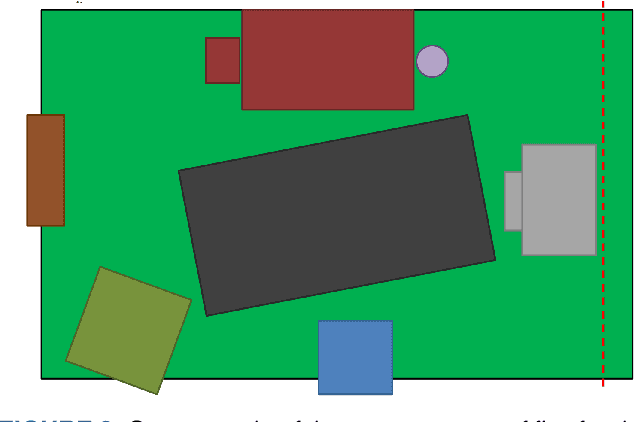Sae Young Moon
Automatic Labelling with Open-source LLMs using Dynamic Label Schema Integration
Jan 21, 2025Abstract:Acquiring labelled training data remains a costly task in real world machine learning projects to meet quantity and quality requirements. Recently Large Language Models (LLMs), notably GPT-4, have shown great promises in labelling data with high accuracy. However, privacy and cost concerns prevent the ubiquitous use of GPT-4. In this work, we explore effectively leveraging open-source models for automatic labelling. We identify integrating label schema as a promising technology but found that naively using the label description for classification leads to poor performance on high cardinality tasks. To address this, we propose Retrieval Augmented Classification (RAC) for which LLM performs inferences for one label at a time using corresponding label schema; we start with the most related label and iterates until a label is chosen by the LLM. We show that our method, which dynamically integrates label description, leads to performance improvements in labelling tasks. We further show that by focusing only on the most promising labels, RAC can trade off between label quality and coverage - a property we leverage to automatically label our internal datasets.
API-Spector: an API-to-API Specification Recommendation Engine
Dec 14, 2022Abstract:When designing a new API for a large project, developers need to make smart design choices so that their code base can grow sustainably. To ensure that new API components are well designed, developers can learn from existing API components. However, the lack of standardized method for comparing API designs makes this learning process time-consuming and difficult. To address this gap we developed the API-Spector, to the best of our knowledge one of the first API-to-API specification recommendation engines. API-Spector retrieves relevant specification components written in OpenAPI (a widely adopted language used to describe web APIs). API-Spector presents several significant contributions, including: (1) novel methods of processing and extracting key information from OpenAPI specifications, (2) innovative feature extraction techniques that are optimized for the highly technical API specification domain, and (3) a novel log-linear probabilistic model that combines multiple signals to retrieve relevant and high quality OpenAPI specification components given a query specification. We evaluate API-Spector in both quantitative and qualitative tasks and achieve an overall of 91.7% recall@1 and 56.2% F1, which surpasses baseline performance by 15.4% in recall@1 and 3.2% in F1. Overall, API-Spector will allow developers to retrieve relevant OpenAPI specification components from a public or internal database in the early stages of the API development cycle, so that they can learn from existing established examples and potentially identify redundancies in their work. It provides the guidance developers need to accelerate development process and contribute thoughtfully designed APIs that promote code maintainability and quality.
Multi Visual Modality Fall Detection Dataset
Jun 25, 2022



Abstract:Falls are one of the leading cause of injury-related deaths among the elderly worldwide. Effective detection of falls can reduce the risk of complications and injuries. Fall detection can be performed using wearable devices or ambient sensors; these methods may struggle with user compliance issues or false alarms. Video cameras provide a passive alternative; however, regular RGB cameras are impacted by changing lighting conditions and privacy concerns. From a machine learning perspective, developing an effective fall detection system is challenging because of the rarity and variability of falls. Many existing fall detection datasets lack important real-world considerations, such as varied lighting, continuous activities of daily living (ADLs), and camera placement. The lack of these considerations makes it difficult to develop predictive models that can operate effectively in the real world. To address these limitations, we introduce a novel multi-modality dataset (MUVIM) that contains four visual modalities: infra-red, depth, RGB and thermal cameras. These modalities offer benefits such as obfuscated facial features and improved performance in low-light conditions. We formulated fall detection as an anomaly detection problem, in which a customized spatio-temporal convolutional autoencoder was trained only on ADLs so that a fall would increase the reconstruction error. Our results showed that infra-red cameras provided the highest level of performance (AUC ROC=0.94), followed by thermal (AUC ROC=0.87), depth (AUC ROC=0.86) and RGB (AUC ROC=0.83). This research provides a unique opportunity to analyze the utility of camera modalities in detecting falls in a home setting while balancing performance, passiveness, and privacy.
Multiple Sclerosis Severity Classification From Clinical Text
Oct 29, 2020



Abstract:Multiple Sclerosis (MS) is a chronic, inflammatory and degenerative neurological disease, which is monitored by a specialist using the Expanded Disability Status Scale (EDSS) and recorded in unstructured text in the form of a neurology consult note. An EDSS measurement contains an overall "EDSS" score and several functional subscores. Typically, expert knowledge is required to interpret consult notes and generate these scores. Previous approaches used limited context length Word2Vec embeddings and keyword searches to predict scores given a consult note, but often failed when scores were not explicitly stated. In this work, we present MS-BERT, the first publicly available transformer model trained on real clinical data other than MIMIC. Next, we present MSBC, a classifier that applies MS-BERT to generate embeddings and predict EDSS and functional subscores. Lastly, we explore combining MSBC with other models through the use of Snorkel to generate scores for unlabelled consult notes. MSBC achieves state-of-the-art performance on all metrics and prediction tasks and outperforms the models generated from the Snorkel ensemble. We improve Macro-F1 by 0.12 (to 0.88) for predicting EDSS and on average by 0.29 (to 0.63) for predicting functional subscores over previous Word2Vec CNN and rule-based approaches.
 Add to Chrome
Add to Chrome Add to Firefox
Add to Firefox Add to Edge
Add to Edge